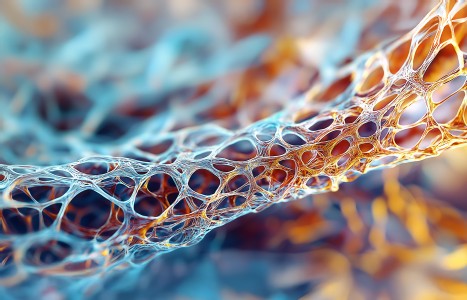Think of your most difficult patient – the one you try to motivate and work so hard with to develop a realistic treatment plan with achievable and measurable goals. Week after week, you see this patient struggle, sinking deeper into hopelessness as their health and quality of life continue to worsen. What if there was something else you could do that could change their outlook and their life? The solution is as simple as an automated program.
| Digital ExclusiveTCM and Infectious Disease
In traditional Chinese medicine, the first reference to infectious disease appeared in Huang Di Nei Jing (Yellow Emperor's Inner Classic) compiled in the first or second century C.E. This text discussed the presence of Re Bing (hot disease), which according to our understanding today, refers to the various types of infectious disease.
The understanding of infectious disease progressed further during the Ming and Qing dynasties as many people in Southern China suffered and died from a variety of feverish conditions. Many doctors recognized that these patterns of illness were significantly different from shang han (cold damage) patterns, and therefore, must be diagnosed and treated differently. W Yu-Xìng, Yè Guì, and W√∫ T√°ng, three of the most influential doctors during that era, collectively contributed to a new school of thought, namely wen bing (warm disease). According to this new theory, warm and hot disease plagued everyone, starting "from one person to the entire household, from one household to the entire street, and from one street to the entire village." When affected, the disease first affected the exterior of the body, and progressed to the interior, following the patterns of wei (defensive), qi (energy), ying (nutritive), and xue (blood) levels. Furthermore, it was observed that the cause of these warm and hot disease have "no sound nor smell, and no shape nor shadow." In addition, it was noted that the warm and hot disease may be transmitted from one person to another via "heaven (air borne)" or "earth (direct contact)," and affect weak, deficient individuals (i.e., those with low immunity).
Lastly, many of the bitter and cold herbs and formulas used to treat these warm and hot diseases are recognized today to have remarkable antibiotic effects. These observations are made and published approximately 200 years before the discovery of bacteria and other micro-organisms. Wen bing (warm disease) theories accurately described the origins and transmission of epidemic disease, and the importance of the immune system in relationship to the pathogens. Wen bing (warm disease) theories revolutionized and significantly influenced the theory and practice of traditional Chinese medicine, changes that persist even today.
Prevention of Infectious Disease
One of the fundamental concepts in traditional Chinese medicine is that "superior medicine prevents disease, and inferior medicine treats disease." Prevention of infectious disease is certainly no exception since bacteria and virus tend to adversely affect those who have weakened or compromised immune systems. Many herbs and formulas that tonify wei (defensive) qi have been shown to have marked effect to boost the immune system. Examples include:
Classic formulas with immunostimulant effect:
- Shi Quan Da Bu Tang (All-Inclusive Great Tonifying Decoction)
- Ren Shen Yang Ying Tang (Ginseng Decoction to Nourish the Nutritive Qi)
- Bu Zhong Yi Qi Tang (Tonify the Middle and Augment the Qi Decoction)
- Si Jun Zi Tang (Four-Gentlemen Decoction)
- Yu Ping Feng San (Jade Windscreen Powder)
Herbs with immunostimulant effect:
- Dong Chong Xia Cao (Cordyceps)
- Ren Shen (Radix et Rhizoma Ginseng)
- Dang Shen (Radix Codonopsis)
- Huang Qi (Radix Astragali)
- Bai Zhu (Rhizoma Atractylodis Macrocephalae)
Treatment of Infectious Disease
Traditional Chinese medicine consider infectious disease as wen bing (warm disease) and treat it with heat-clearing herbs. Many of these herbs are confirmed to have remarkable antibiotic effects, including antibacterial and antiviral. In addition to traditional diagnosis and treatment, the following herbs and formulas may be considered to more precisely target and treat infectious disease.
Classic formulas with antibiotic effect:
- Yin Qiao San (Honeysuckle and Forsythia Powder)
- Huang Lian Jie Du Tang (Coptis Decoction to Relieve Toxicity)
- Long Dan Xie Gan Tang (Gentiana Decoction to Drain the Liver)
- Pu Ji Xiao Du Yin (Universal Benefit Decoction to Eliminate Toxin)
- Ba Zheng San (Eight-Herb Powder for Rectification)
Herbs that have antibacterial effect include:
- Bai Tou Weng (Radix Pulsatillae)
- Chuan Xin Lian (Herba Andrographis)
- Huang Lian (Rhizoma Coptidis)
- Hu Zhang (Rhizoma et Radix Polygoni Cuspidati)
- Huang Bo (Cortex Phellodendri Chinensis)
- Huang Qin (Radix Scutellariae)
- Ku Shen (Radix Sophorae Flavescentis)
- Pu Gong Ying (Herba Taraxaci)
- Shan Dou Gen (Radix et Rhizoma Sophorae Tonkinensis)
Herbs that have antiviral effect include:
- Ban Lan Gen (Radix Isatidis)
- Da Qing Ye (Folium Isatidis)
- Jin Yin Hua (Flos Lonicerae Japonicae)
- Lian Qiao (Fructus Forsythiae)
- Ye Ju Hua (Flos Chrysanthemi Indici)
In Western medicine, the discovery of antibiotic drugs is one of the major breakthroughs in modern medicine. It enables doctors to effectively treat many different types of infections. Unfortunately, decades of abuse and misuse have led to growing problems of bacterial mutation and resistance. At this moment, many of these "super bugs" can only be treated with the newest and most potent antibiotic drugs, and unfortunately, many of them have potent side effects as well. Due to the number of antibiotic drugs, and the various species of micro-organisms, it is beyond the scope of this article to discuss the benefits and risks of each individual drug. As a category, antibiotic drugs are extremely effective against most types of bacterial infections. The key points are to select the correct antibiotic drug with least potential side effects, and make sure that the patient finishes the entire course of therapy.
In traditional Chinese medicine, herbs and herbal formulas are also extremely effective for treatment of various infections. In fact, most modern pharmaceutical drugs were originally derived from natural sources, including penicillin [the oldest antibiotic] and gentimicin [one of the most potent]. One of the main benefits of using herbs is their wide spectrum of antibiotic effect, with indications for bacterial and viral infections. Furthermore, most of these herbs are extremely safe, and do not have the same harsh side effects as drugs. Therefore, when treating patients with bacterial or viral infections, it may be beneficial to use the herbs noted with confirmed antibacterial and antiviral effects.
In summary, both drugs and herbs are effective to treat mild to moderate cases of bacterial infections. However, because drugs are more immediately potent and can be prescribed with more laboratory precision (via cultures and sensitivity tests), they are more appropriate for life-threatening infections, such as meningitis or encephalitis, or mutant strains of bacteria, such as beta-lactam-resistant Staphylococcus aureus and methicillin-resistant Staphylococcus aureus (MRSA). On the other hand, use of herbs is far more effective than drugs for treating certain viral infections, such as the common cold and influenza, as drugs are essentially ineffective for these conditions. Most importantly, herbs are much gentler to the body and safer than drugs. In other words, herbs treat infection without damaging the patient's underlying constitution. This allows the patient to recover faster, and become more resistant to secondary or re-current infections.
References
- Gilbert D, Moellering R. and Sande M. The Sanford Guide to Antimicrobial Therapy 1999. 29th Edition. Antimicrobial Therapy, Inc. Hyde Park, VT USA.
- W Yu-Xìng, also known as W Yòu-K, 1580's – 1660's (exact dates of his birth and death are unknown).
- Yè Guì, also known as Yè Tin-Shì, 1666 – 1745.
- W√∫ T√°ng, also known as W√∫ J-Tng, 1758 – 1836.
- Wen Re Lun (Discussion of Warm and Hot Disorders) by the apprentices of Ye Gui between 1745 to 1766.
- Wen Yi Lun (Discussion of Epidemic Warm Disease) by W Yu-Xìng in 1642.
- Wen Bing Tiao Bian (Systematic Differentiation of Warm Disease) by W√∫ T√°ng in 1798.
- Bei Ji Qian Jin Yao Fang (Thousands of Golden Prescriptions for Emergencies) by Sún Sí-Mio in the middle of the 7th century.
- Chen J. Chen T. Chinese Herbal Formulas and Applications, 2009. Art of Medicine Press. City of Industry, CA USA.
- Zhong Yi Fang Ji Xian Dai Yan Jiu (Modern Study of Medical Formulae in Traditional Chinese Medicine) 1997;652-654.
- Guo Wai Yi Xue Zhong Yi Zhong Yao Fen Ce (Monograph of Chinese Herbology from Foreign Medicine) 1992;14(2):52.
- Zhong Yi Fang Ji Xian Dai Yan Jiu (Modern Study of Medical Formulae in Traditional Chinese Medicine) 1997;520-521.
- Zhong Cheng Yao Yan Jiu (Research of Chinese Patent Medicine) 1981;12:28.
- Zhong Xi Yi Jie He Za Zhi (Journal of Integrated Chinese and Western Medicine) 1990;12:22.
- Chen J. Chen T. Chinese Medical Herbology and Pharmacology, 2004. Art of Medicine Press. City of Industry, CA USA.
- Shang Hai Yi Yao Za Zhi (Shanghai Journal of Medicine and Herbology), 1988; 1:48
- Zhong Yao Xue (Chinese Herbology), 1998; 729:736
- Zhong Xi Yi Jie He Za Zhi (Journal of Integrated Chinese and Western Medicine), 1985; 5(8):487
- Biol Pharm Bull, 1977; 20(11)-1178-82
- Xin Yi Yao Xue Za Zhi (New Journal of Medicine and Herbology), 1979; 6:60
- Chen J. Chen T. Chinese Herbal Formulas and Applications, 2009. Art of Medicine Press. City of Industry, CA USA.
- Zhong Cheng Yao (Study of Chinese Patent Medicine) 1990;12(1):22.
- Hu Bei Zhong Yi Za Zhi (Hubei Journal of Chinese Medicine) 1981;4:30.
- Zhong Yao Yao Li Du Li Yu Lin Chuang (Pharmacology, Toxicology and Clinical Applications of Chinese Herbs) 1991;(1):5.
- Chen J, Chen T. Chinese Medical Herbology and Pharmacology. City of Industry, CA: Art of Medicine Press, 2004.
- Zhong Yi Yao Xin Xi (Information on Chinese Medicine and Herbology) 1987;6:31.
- Chen J. Chen T. Chinese Medical Herbology and Pharmacology, 2004. Art of Medicine Press. City of Industry, CA USA.
- CA, 1948; 42:4228a
- Zhong Yao Xue (Chinese Herbology), 1998, 178:179
- Zhong Hua Yi Xue Za Zhi (Chinese Journal of Medicine), 1958; 44(9):888
- Zhong Xi Yi Jie He Za Zhi (Journal of Integrated Chinese and Western Medicine), 1989; 9(8):494
- Zhong Yao Xue (Chinese Herbology), 1998; 556-558
- Zhong Yao Da Ci Dian (Dictionary of Chinese Herbs), 1977: 2032
- Zhong Yao Xue (Chinese Herbology), 1988; 137:140
- Zhong Yao Xue (Chinese Herbology), 1998; 148:151
- Zhong Yi Yao Xue Bao (Report of Chinese Medicine and Herbology), 1991; (1):41
- Xian Dai Shi Yong Yao Xue (Practical Applications of Modern Herbal Medicine), 1988; 5(1):7
- Zhong Cheng Yao Yan Jiu (Research of Chinese Patent Medicine), 1987; 12:9
- Zhong Yao Xue (Chinese Herbology), 1998; 174:175
- Shan Xi Xin Yi Yao (New Medicine and Herbology of Shanxi), 1980; 9(11):51
- Shan Xi Xin Yi Yao (New Medicine and Herbology of Shanxi), 1980; 9(11):51
- Zhong Hua Yi Xue Za Zhi (Chinese Journal of Medicine), 1962; 48(3):188


